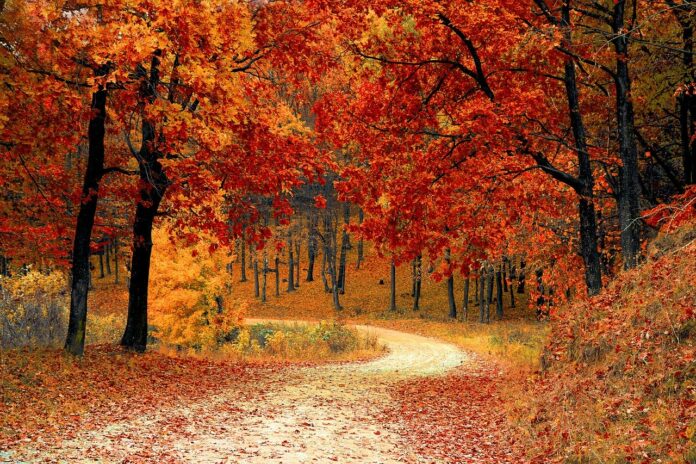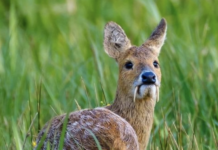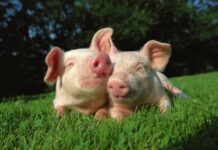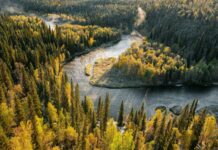Temperate Seasonal Forests -Temperate regions experience the most acute changes in the weather. One could be speed boating on a river in the middle of the year and would be ice skating by the end of the year. Yes, the season changes are that sharp. And Temperate Deciduous forests experience the same thing, from being covered with ice to waving in the high-speed summer winds.
Growing up experiencing multiple seasons a year has its perk. One gets to see life from every aspect and angle. From watching empty streets with no human or animal contact in winter to watching birds chirping and highly dense civilizations going on about their life on a busy summer afternoon. Winter is often seen as quiet and peaceful, whereas spring brings a special awakening to mankind, where trees begin to look bright, and life reappears as new for humans, animals, and flora.
This recurring pattern of seasonal change has empowered Temperate Seasonal Forests to adapt, evolve, and flourish everywhere in the world.
What does the term “Deciduous” mean?
The word Deciduous symbolizes a plant’s ability to get rid of its leaves when the times get hard. Trees having this ability to get rid of their leaves in the dry season to conserve water are known as Drought Deciduous. Similarly, some trees lose their leaves in extreme cold and poor sunlight.
Although useful, this particular ability comes at a great cost, as unlike other evergreen trees, deciduous trees have to use precious nutrients from the land to regrow their leaves. And in poor soil conditions, it becomes difficult for a deciduous tree to regrow as many leaves as before. So it deeply dents the population of trees and plants in that region.
Where are the Temperate Seasonal Forests Biome Located?
Temperate Seasonal forests are generally found in the Temperate latitude zone on the map. Just like tropical forests are found in the Tropic latitude zone. Regions that range between 0° and 23° north and south latitude of the equator are known as Tropic latitudes, and similarly, regions ranging around 23° and 66° are called Temperate Latitudes. In the southern part of the hemisphere, Temperate forests can be seen around the Southern part of South America and the East part of Australia. Also, in the Northern part of the hemisphere, temperate forests are found in some parts of Japan, Korea, China, western Europe, and also in the eastern part of America.
Read More – How can we reduce soil erosion?
What does a Tree in Temperate Seasonal Forests look like?
To experience the beauty of this flora, take a walk in the northern hardwood forests of Wisconsin or from the sugar maple stand in Vermont, tasting the sap. These are among the oldest and prettiest forests in the world. The trees form a leafy roofline over your head, making a perfect sunroof, letting only the right amount of sunlight pass through, casting a beautiful shadow on the ground.
As you walk more through the forest, you will hear crunchy leaves getting crushed under your feet, and not only crunchy leaves, if you dig the upper layer of soil, you will find a decomposing pile of leaves covered with white strands fungus that makes the soil nutritional for the trees for the upcoming blooming season. Fungus and bacteria play a very important role in decomposing the dead leaves, making the soil nutrient rich.
Like humans, plants also vary according to the place they are found. This means that even temperate deciduous trees differ in species depending on the place they are found at. Mostly it depends on the climate of the area they are found at.
What are the kinds of plants found in a Deciduous forest?
When you walk through a deciduous forest, you will find a variety of trees like the Oak, Maple, Chestnut, Elm to name a few. The trees have special characteristics like having broad leaves attached to the branch by a special stem called a petiole; having these broad leaves as an identifying character has also earned the deciduous forests the name “broadleaf forests”.
Unlike the trees of pine forests, the leaves of deciduous trees are not like needles but are soft and easily digestible for animals, which is why these forests are home to several species of herbivores.
The trees in deciduous forests can be seen to form a structure imitating a canopy blocking the incoming sunlight from penetrating to the ground. This has made the plants at the bottom side of the trees evolve into shade tolerant (surviving in scarce sunlight). The nature of the trees in temperate deciduous forests can be called perennial, having the ability to self-renew after a season. They flower only during summer and require a certain amount of warmth.
Commonly found plants are thick, woody, thorny shrubs like rhododendron, buckthorn, sumac, honeysuckle, etc. Hundreds of various varieties of plants can be found growing near the bottom of the trees. Early spring and summer is the most efficient season as most varieties of plants, herbs, and windflowers, such as Jack-in-the-Pulpit, May Apple, Bedstraw, Purslanes, Mustard, etc., flower and seed in a few weeks.
Disruptions caused by Nature:
The most common phenomenon that disrupts these temperate seasonal forests is Tree fall. These forests cover up the entire forest like a canopy shadowing everything underneath, and for instance, if a tree falls, it lets all the sunlight fall right on the ground, which makes the ground germinate again. It then houses all kinds of fungi, bacteria, and other organisms that disrupt the nutrients in the soil that the trees should use to regrow their leaves.
However, as time passes, the trees grow back, and the blooming diversity of a forest prevails with the co-existence of both plants and organisms.
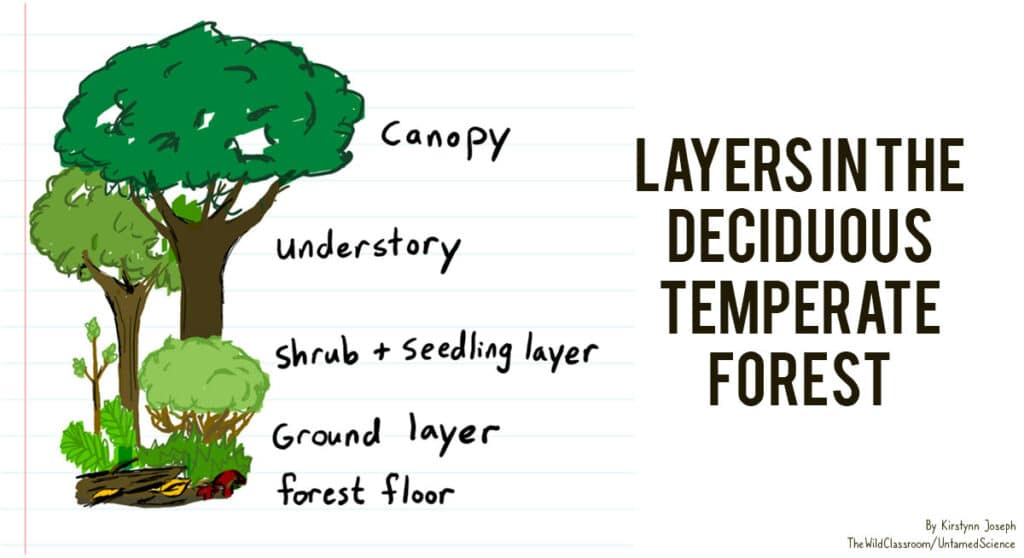
Frequently Asked Questions (FAQs):
- What does the term “Deciduous” mean?
The word Deciduous symbolizes a plant’s ability to get rid of its leaves when the times get hard. Trees can get rid of their leaves in the dry season to conserve water. - What are the three characteristics of a Temperate Deciduous forest?
* The soil is nutrients rich and helps the trees grow back fast.
* There is a high amount of moisture present in the climate.
* Trees in temperate seasonal forests have a long height that forms a canopy-like a roof over the forest.
Read More- BOREAL FOREST TEMPERATURE: Location, Climate, Plants and Animals

